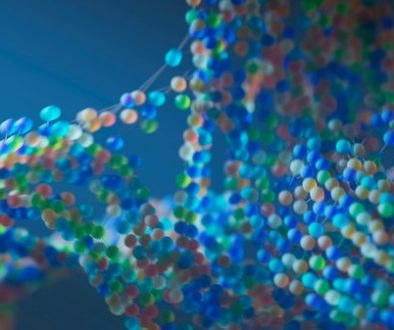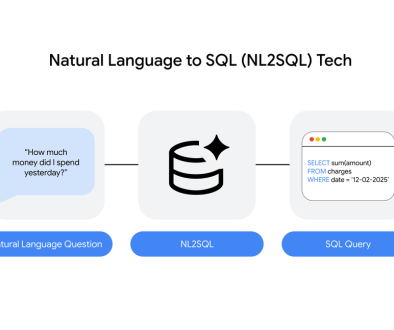GCP – Day 1 at Google Cloud Next 25 recap
Hello from Google Cloud Next 25 in Las Vegas! This year, it’s all about how AI can reimagine work and improve our lives — even bringing Hollywood classics like The Wizard of Oz to life on one of the biggest screens in the world.

To start, CEO of Google Cloud Thomas Kurian celebrated the incredible momentum we’ve seen over the past year, with over 4 million developers already building with Gemini and a 20 times surge in Vertex AI usage. He also took a moment to acknowledge where this power comes from — our global infrastructure, which has grown to 42 regions, in 200 countries, connected by more than 2 million miles of fiber. This network moves data at “Google speed” — near-zero latency — for billions of users worldwide.
Then, Google and Alphabet CEO Sundar Pichai took the stage and announced our seventh-generation TPU — Ironwood — is coming later this year. Compared to our first publicly available TPU, Ironwood achieves 3600 times better performance. In the same period, our TPUs have become 29 times more energy efficient.
As Sundar said, we’re investing in the full stack of AI innovation — from infrastructure, to research, to models, to platforms. “One year ago, we stood here and talked about the future of AI for organizations. Today, that future is being built by all of us,” he said. Put simply: the opportunity with AI is as big as it gets. In fact, we’ve counted more than 600 use cases from massive brands, forward-thinking entrepreneurs, and major institutions all over the world, including Intuit, Verizon, and many more.
Here’s a taste of all the things that we announced today, across infrastructure, research and models, Vertex AI, and agents.
AI infrastructure
Demand for AI compute is growing — fast. To quote Amin Vadhat, VP & GM of AI, Systems, and Cloud AI, “For over 8 years, it has increased by over 10 times year over year – a factor of 100,000,000 in just 8 years!” Now, we’re bringing this AI infrastructure to you with innovations across our AI Hypercomputer stack.

What we announced:
-
Ironwood TPUs: Our seventh-generation TPU, Ironwood represents our largest and most powerful TPU to date, a more than 10x improvement from our most recent high-performance TPU. Featuring more than 9,000 chips per pod, Ironwood delivers a staggering 42.5 exaflops of compute per pod, meeting the exponentially growing demands of the most sophisticated thinking models, like Gemini 2.5. Read more here.
-
Gemini on Google Distributed Cloud: No matter where you are, Gemini can run on GDC locally in air-gapped and connected environments, with support for NVIDIA’s Confidential Computing and DGX B200 and HGX B200 Blackwell systems, with Dell as a key partner. Get the details.
Research & Models
It feels like a long time ago, but we first released Gemini just last year. As our first native multimodal model, Gemini delivered the first 2-million-token context window, and led in price performance with our flash models. Then, we launched Gemini 2.5 Pro, which hit #1 on Chatbot Arena!

What we announced:
- Gemini 2.5 Pro is available in public preview on Vertex AI and the Gemini app.
- Gemini 2.5 Flash — our workhorse model optimized specifically for low latency and cost efficiency — is coming soon to Vertex AI, AI Studio, and the Gemini app.
- Imagen 3, our highest quality text-to-image model, now has improved image generation and inpainting capabilities for reconstructing missing or damaged portions of an image. Imagen delivers unmatched prompt adherence, bringing customers’ creative visions to life with incredible precision and is ranked #1 on LMArena.
- Chirp 3, our groundbreaking audio generation model, now includes a new way to create custom voices with just 10 seconds of audio input, enabling enterprises to personalize call centers, develop accessible content, and establish unique brand voices—all while maintaining a consistent brand identity.
- Lyria, the industry’s first enterprise-ready, text-to-music model, can transform simple text prompts into 30-second music clips, opening up new avenues for creative expression.
- Veo 2, our industry-leading video generation model, is expanding with new features that help organizations create videos, edit them, and add visual effects, transforming Veo on Vertex AI from a generation tool to a comprehensive video creation and editing platform.
Together, this turns Vertex AI into the only platform with generative media models across video, image, speech, and music.
To put these models into practice, we announced some exciting updates to Workspace:
-
Help me analyze in Google Sheets which guides you through your data to complete expert-level analysis
-
Audio overviews in Google Docs, where you can interact with Docs in an entirely new way by creating high-quality audio versions of your content
-
Google Workspace Flows, to help you automate time-consuming, repetitive tasks and make decisions with more context
Vertex AI
Soon, every enterprise will soon rely on multi-agent systems — multiple AI agents working together — even when built on different frameworks or providers. Vertex AI — our comprehensive platform to orchestrate the three pillars of production AI: models, data, and agents — seamlessly brings these elements together. As Thomas said on stage, tens of thousands of enterprises are already building with Vertex AI and Gemini. In just the last year alone, we’ve seen over 40x growth in Gemini use on Vertex AI, now with billions of API calls per month. So what’s new and better with Vertex AI?
What we announced:
- Meta’s Llama 4 is generally available on Vertex AI.
-
Vertex AI Dashboards: These help you monitor usage, throughput, latency, and troubleshoot errors, providing you with greater visibility and control.
-
Vertex AI Model Optimizer: This capability uses Google’s unique understanding of Gemini to automatically direct your query to the most performant model and tools, based on your quality, speed and cost preferences.
-
Live API: To enable truly conversational interactions, Live API offers streaming audio and video directly into Gemini.
Agents
Now, let’s get to what everyone is talking about — agents. How to build them, where to build them, and how to scale them. Today we put AI agents in the hands of every employee with Google Agentspace. Employees can now find and synthesize information from within their organization, converse with AI agents, and take action with their enterprise applications. We also expanded Vertex AI to enable multi-agent ecosystems — we’re far beyond single-agent capabilities now.
What we announced:
-
Agent2Agent (A2A) protocol: We’re proud to be the first hyperscaler to create an open Agent2Agent (A2A) protocol to help enterprises support multi-agent ecosystems, so agents can communicate with each other, regardless of the underlying technology.
-
Agent Development Kit (ADK): Our new AI Agent Development Kit (ADK) is an open-source framework that makes it easy to build multi-agent systems — with ADK, you can build an AI agent in under 100 lines of intuitive code.
-
Chrome Enterprise: Agentspace is integrated with Chrome Enterprise, which means you can search and access all of your enterprise’s resources — right from the search box in Chrome.
-
Agent Garden: This collection of ready-to-use samples and tools is directly accessible in ADK. Agent Garden allows you to connect your agents to 100+ pre-built connectors, your custom APIs, integration workflows, or data stored within cloud systems like BigQuery and AlloyDB.
-
Interoperability: With Vertex AI, you can manage agents built on multiple agent frameworks, including LangGraph and Crew AI.
Agents for all
We also announced specialized agents for several of our key constituencies: developers, operators, data scientists and data analysts, as well as several verticals.

What we announced:
-
Customer Engagement Suite: The next generation of this CRM solution provides out-of-the-box functionality to build agents across web, mobile, call center, in-store and with third-party telephony and CRM systems.
-
Gemini Code Assist: To boost developer productivity, we now offer agents that can translate natural language requests into multi-step, multi-file solutions, new tools that make it easy to connect Code Assist to external services, third-party partners, or even other agents, and support for Gemini 2.5 and its enhanced coding capabilities.
-
Gemini Code Assist tools: These are prebuilt connections accessible within Gemini Code Assist’s chat that help you access information from Google apps and industry-leading tools from partners including Atlassian, Sentry, Snyk, and more.
-
Gemini Cloud Assist: Operators can lean on Gemini for help across a variety of IT tasks, from application design and operations, to troubleshooting, to cost optimization.
-
Data agents: From new data engineering agent capabilities, a data science agent embedded within Google’s Colab notebook, to Looker conversational analytics to allow business users to chat with their data, AI is making it easy to ask questions of your data — and get easy answers!

And that’s just the tip of the iceberg! There were also spotlights, hundreds of breakout sessions, hands-on labs, and thousands of show floor conversations. We can’t wait to see you again tomorrow, when we’ll share even more news, go deep on today’s announcements, and host the perennial favorite — the Developer Keynote. Have fun in Vegas tonight. But don’t stay out too late, because there’s lots more ahead tomorrow!
- aside_block
- <ListValue: [StructValue([(‘title’, ‘Turn your new insights from Google Cloud Next into action’), (‘body’, <wagtail.rich_text.RichText object at 0x3ee7bf776ac0>), (‘btn_text’, ‘Get started’), (‘href’, ‘https://cloud.google.com/events/next25-offer-11’), (‘image’, <GAEImage: next 25>)])]>
Read More for the details.



